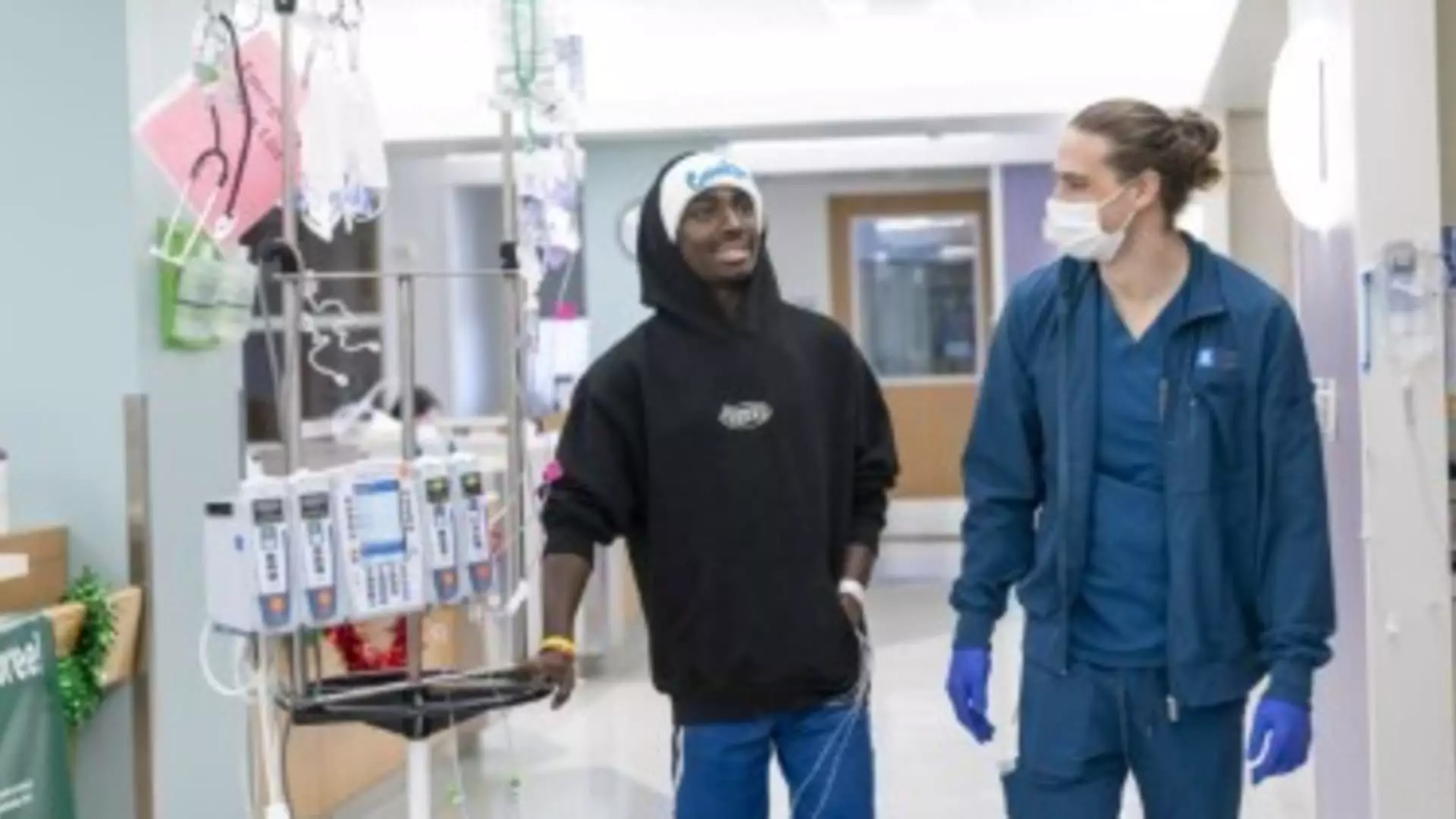Sickle cell disease has long posed significant challenges to those affected. Many individuals, particularly in minority communities, grapple with the chronic pain and debilitating effects of this genetic disorder. The approval of novel gene therapies has introduced a ray of hope for patients, but significant barriers remain in the path towards widespread and accessible treatment. This article explores the journey of young patients benefiting from these therapies, the complexities of health insurance coverage, and the larger implications for Medicaid programs and healthcare systems.
Deshawn “DJ” Chow’s story embodies both the suffering and the hope that accompany a diagnosis of sickle cell disease. At just 19, Chow has faced months of painful episodes that have kept him out of school and confined to the hospital. The pain he describes is typical of sickle cell patients, whose red blood cells adopt a crescent shape, leading to severe and unpredictable health crises. Yet, with the arrival of new gene therapies, like Casgevy, Chow’s narrative is evolving. After completing his treatment—a process that involved rigorous chemotherapy and numerous hospital stays—he now dares to envision a future filled with activities he long thought impossible, such as snowboarding and surfing.
Chow’s progress represents a small fraction of a growing trend. The emergence of these therapies has restored hope to many young patients whose organs have not yet suffered irreversible damage—a condition common in older individuals with the disease. Nonetheless, accessing such cutting-edge treatments is not guaranteed for all, highlighting a significant disparity in care that warrants attention.
While Chow’s adopted parents managed to secure insurance coverage for his therapy—a blessing that many families are not fortunate enough to experience—the reality is more complex for many individuals seeking treatment for sickle cell disease. The staggering cost of therapies can reach upwards of $3 million, raising critical questions about insurance coverage and patient access. Health practitioners like Dr. Leo Wang have echoed concerns regarding the sustainability of these treatments within existing health care frameworks. While treatment centers have begun to establish smoother processes for obtaining necessary authorizations from insurers, the price tag attached to these therapies remains a daunting barrier.
The health care system is finding it increasingly difficult to integrate therapies of such magnitude into standard coverage plans. With requirements for extensive pre-treatment authorizations and a cumbersome billing process, healthcare facilities often bear the brunt of navigating these complex logistics, which can significantly delay patient access to transformative care.
Complicating matters further is the role of Medicaid in covering treatments for low-income individuals afflicted by sickle cell disease. A substantial portion of the patient population exists within the federal-state government health plan, presenting additional challenges in coverage capacity and accessibility. Proposed federal funding models could offer states relief from the fiscal pressures associated with the costs of these new therapies, yet ambiguity remains about how effective these measures will be in practice.
The Biden administration’s Cell and Gene Therapy payment model, set to provide states with outcome-based discounts, is a step in the right direction. Yet there’s skepticism about whether the amount allocated will sufficiently tackle the needs of states with large sickle cell populations. For example, Georgia and Florida—states with dense sickle cell demographics—may find themselves inadequately supported as treatment costs soar.
With anticipation building around the increased demand for these treatments, the urgency for innovative payment models has become palpable. Health insurance executives, like David Joyner of Aetna, suggest exploring collective insurance approaches, including bulk purchasing agreements and emerging risk pools, to alleviate pressure on state budgets.
As the healthcare community continues to navigate the complexities associated with sickle cell gene therapies, the future remains uncertain yet hopeful for patients like DJ Chow. While institutional challenges persist, the relentless efforts of healthcare providers, researchers, and advocates serve to illuminate pathways toward expanding access to life-changing treatments.
The optimism expressed by Chow’s father, Sean, reflects a yearning for systemic change that could benefit all families facing the harrowing trials of sickle cell disease. “Having a child with sickle cell has been heartbreaking,” he said, echoing the sentiments of many parents whose children grapple with this illness. As treatments evolve and coverage becomes more comprehensive, there lies the potential for a new reality—one in which families are no longer defined by their loved ones’ illness but instead can celebrate their abilities and aspirations.
As we stand at the intersection of medical innovation and the complexities of healthcare access, the journey for sickle cell patients reminds us of the importance of equitable health policies that honor the humanity of every individual. The hope engendered by therapies like Casgevy must translate into tangible support and accessibility for all in need.

